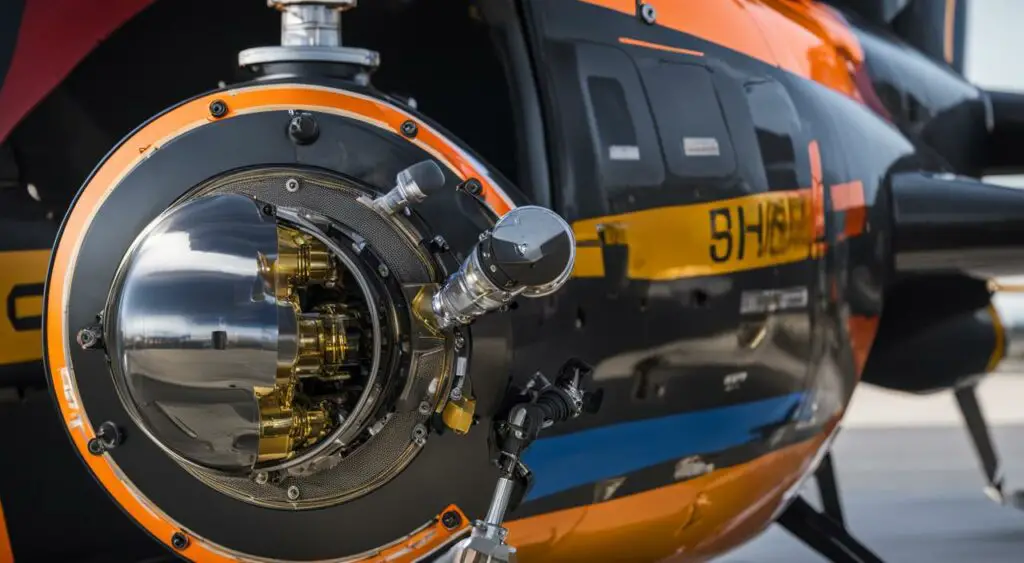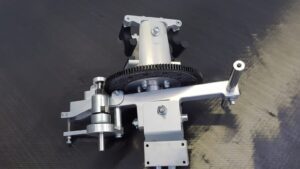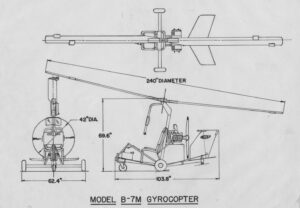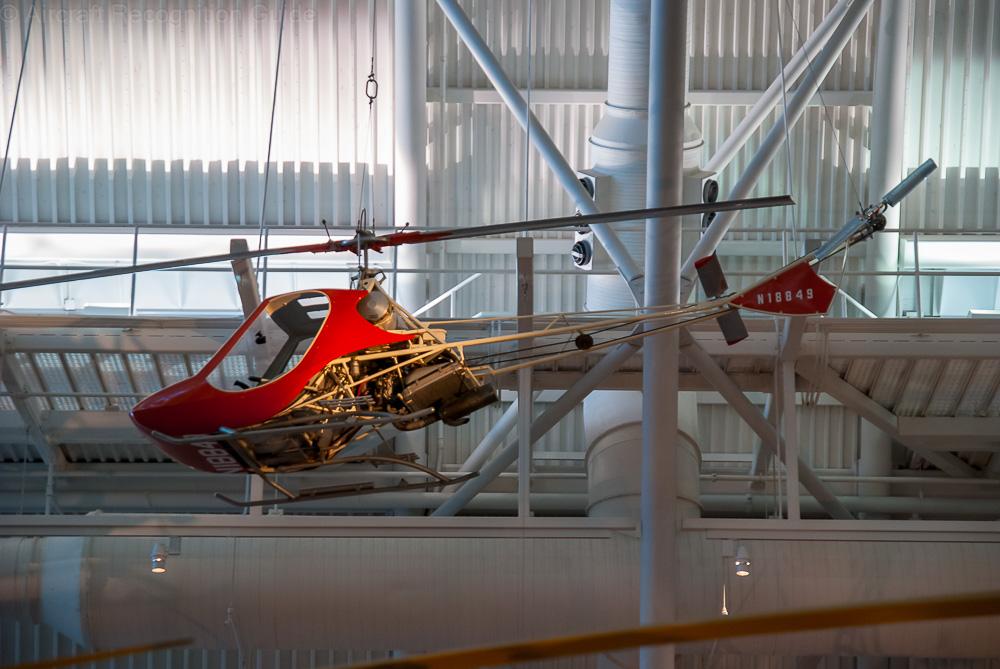What does helicopter use as fuel? Helicopter can use different fuel depending on engine type, some turbine engine helicopters uses Jet-A and Diesel while other piston engine helicopters uses gasoline popularly known as petrol.
Helicopters have revolutionized the aviation industry with their ability to hover, take off vertically, and fly in any direction.
Contents
Unlike airplanes, they do not require a runway, making them a popular choice for search and rescue missions, medical evacuations, and military operations.
However, have you ever wondered what fuels these impressive flying machines?
In this ultimate guide, we will explore the different types of fuel used in helicopters, their consumption rates, and the factors that influence fuel usage.
We will also delve into the cost of helicopter fuel, the importance of fuel efficiency, and potential alternative fuel sources for these versatile aircraft.
By the end of this guide, you’ll have a comprehensive understanding of what helicopters use as fuel.
Key Takeaways:
- Helicopters are unique flying machines that do not require a runway to take off or land.
- In this ultimate guide, we will explore the different types of fuel used in helicopters and their consumption rates.
- The cost of helicopter fuel and the importance of fuel efficiency will also be discussed.
- Potential alternative fuel sources for helicopters will be explored, including renewable energy options and hybrid or electric propulsion systems.
- Understanding helicopter fuel usage is crucial for their efficient operation and overall safety.
What Does Helicopter Use as Fuel?

Helicopters are powered by engines that require a specific type of fuel to operate efficiently.
Jet fuel and aviation turbine fuel are the most common fuels used in helicopters, as they are designed to meet the specific requirements of these engines.
Jet fuel, also known as kerosene, is a type of fuel designed for use in gas turbine engines. It is commonly used in commercial aviation and military aircraft, including helicopters.
Aviation turbine fuel, on the other hand, is a specialized type of kerosene that is designed specifically for use in gas turbine engines used in aircraft.
Helicopter engines are typically classified according to their size, with larger engines requiring more fuel than smaller engines.
The fuel requirements of a helicopter engine also depend on factors such as the altitude at which the aircraft is flying, the weight of the aircraft, and the speed at which it is traveling.
Types of Helicopter Engines
Helicopter engines can be classified into two main types: turbine-powered and piston-powered. Turbine-powered engines, also known as turboshaft engines, are the most common type of engine used in helicopters.
They are designed to provide high power output while being lightweight and compact.
Piston-powered engines, on the other hand, are typically used in smaller helicopters and are similar to those used in automobiles.
They are capable of producing less power than turbine-powered engines, but they are more fuel-efficient and require less maintenance.
Aviation Fuel for Helicopters
In addition to jet fuel and aviation turbine fuel, helicopters can also use other types of aviation fuel such as aviation gasoline, also known as avgas, and diesel.
These fuels are typically used in smaller helicopters and are less commonly used in larger aircraft.
The type of fuel used in a helicopter depends on a variety of factors, including the specific engine type and the intended use of the aircraft.
Helicopters used for military or commercial purposes typically use jet fuel or aviation turbine fuel, while those used for personal or recreational purposes may use avgas or diesel.
“Helicopter engines are typically classified according to their size, with larger engines requiring more fuel than smaller engines.”
Fuel Consumption Rates in Helicopters

Helicopters are known for their versatility and ability to fly in remote areas with limited access. However, they are also known for their high fuel consumption rates, which can vary depending on several factors.
One of the most significant factors that influence fuel consumption in helicopters is the type of engine.
Helicopters equipped with gas turbine engines are known to have higher fuel consumption rates than those with piston-powered engines. This is because gas turbine engines are more powerful and require more fuel to operate.
On average, a helicopter’s fuel consumption rate is between 10 and 25 gallons per hour, depending on the size and type of helicopter.
However, larger helicopters with more powerful engines can consume up to 30 gallons of fuel per hour or more.
Other factors that can impact fuel consumption rates in helicopters include aircraft weight, speed, altitude, and weather conditions.
For example, flying at high altitudes or in adverse weather conditions can require more fuel to maintain the necessary power and speed.
To calculate the fuel consumption rate of a helicopter, pilots typically use a fuel flow meter or rely on manufacturer specifications.
By monitoring fuel consumption rates during flight, pilots can adjust their operations to maximize fuel efficiency and reduce costs.
Gas Turbine Engine Fuel Consumption Rates
Gas turbine engines are the most common type of engine used in helicopters today. These engines are known for their high power output and excellent performance in a variety of conditions.
However, gas turbine engines are also known for their high fuel consumption rates. On average, a gas turbine engine in a helicopter can consume between 20 and 50 gallons of fuel per hour.
The table below highlights the typical fuel consumption rates for various gas turbine engines used in helicopters:
| Engine Type | Fuel Consumption (Gallons per Hour) |
|---|---|
| Turbomeca Arriel 2B1 | 20 – 25 |
| Rolls-Royce RR300 | 18 – 20 |
| Honeywell LTS101 | 25 – 30 |
It’s important to note that fuel consumption rates can vary based on several factors, including the specific helicopter model, weight, and operating conditions.
Overall, it’s crucial for helicopter operators to understand fuel consumption rates and monitor them closely to optimize fuel efficiency and reduce operating costs.
Comparing Turbine-Powered and Piston-Powered Helicopters

When it comes to helicopter engines, there are two main types: turbine-powered and piston-powered. Each type has its own advantages and disadvantages, including fuel requirements and consumption rates.
Turbine-powered helicopters use aviation turbine fuel, also known as jet fuel, and are often larger and more powerful than their piston-powered counterparts.
They typically have higher fuel consumption rates, but can fly faster and carry more weight. Piston-powered helicopters, on the other hand, use aviation gasoline and are generally smaller and less powerful.
They have lower fuel consumption rates and can be more cost-effective for shorter flights, but may not be suitable for longer or more demanding missions.
| Turbine-Powered | Piston-Powered | |
|---|---|---|
| Fuel Type | Aviation Turbine Fuel | Aviation Gasoline |
| Engine Type | Gas Turbine | Piston |
| Fuel Consumption Rate | Higher | Lower |
| Speed | Faster | Slower |
| Weight Capacity | Higher | Lower |
The choice between turbine-powered and piston-powered helicopters ultimately depends on the specific mission requirements and operational needs.
For example, a commercial air tour company may opt for turbine-powered helicopters to provide faster and more efficient transportation for tourists.
While a small private owner may choose a piston-powered helicopter for recreational use due to its lower operating costs.
It is important for helicopter operators to carefully consider their engine and fuel choices to ensure optimal performance and efficiency while also maintaining safety standards.
Whether turbine-powered or piston-powered, proper maintenance and usage of the engines and fuel systems are crucial to the overall operation of these aircraft.
Types of Fuel Used in Helicopters

Helicopters use different types of fuel depending on their size, engine, and design. The most common types of fuel used in helicopters include aviation gasoline, turbine fuel, and diesel.
Each type of fuel has its own advantages and disadvantages and is suitable for different sizes and types of helicopters.
| Fuel Type | Advantages | Disadvantages |
|---|---|---|
| Aviation Gasoline | Low cost and widely available | Not suitable for high-performance helicopters |
| Turbine Fuel | Higher energy content and better performance | Expensive and not widely available |
| Diesel | Good fuel efficiency and easy to maintain | Not suitable for high-performance helicopters |
Small helicopters, such as those used for personal or recreational purposes, often use aviation gasoline due to its lower cost and widespread availability.
In contrast, larger helicopters with more powerful engines typically use turbine fuel, which provides higher energy content and better performance.
Diesel fuel is also used in some helicopters, particularly those with diesel engines. They are known for their good fuel efficiency and easy maintenance.
However, they are not suitable for high-performance helicopters due to their lower energy content.
In summary, the type of fuel used in a helicopter depends on various factors, including the size, engine, and design.
Aviation gasoline, turbine fuel, and diesel are the most common types of fuel used in helicopters, each with its own advantages and disadvantages.
Understanding the differences between these fuel types can help helicopter operators choose the best fuel for their specific needs.
Factors Influencing Helicopter Fuel Consumption

Helicopter fuel consumption depends on a variety of factors, including the fuel used, helicopter type and weight, engine type and power settings, as well as flight parameters like speed, altitude, and weather conditions.
This section will delve into these variables, explaining how they impact fuel consumption rates and what can be done to optimize fuel efficiency.
Helicopter Type and Weight
The type of helicopter and its weight are critical factors in determining fuel consumption rates.
Larger helicopters typically require more fuel than smaller ones, while the weight of the aircraft itself, as well as cargo and passengers, can also affect fuel consumption.
For example, the Robinson R22, a small two-seater helicopter, has a fuel capacity of 22 gallons and consumes around 7.5 gallons per hour.
While the Sikorsky S-92, a larger medium-lift helicopter, has a fuel capacity of 690 gallons and consumes around 200 gallons per hour.
Engine Type and Power Settings
The type of engine used in the helicopter is another significant factor in determining fuel consumption rates.
Gas turbine engines, which are commonly used in helicopters, are more efficient than piston engines. However, fuel consumption still varies depending on the specific engine and its power settings.
For example, flying a helicopter at higher power settings for extended periods of time will result in higher fuel consumption rates.
Flight Parameters
Flight parameters, including speed, altitude, and weather conditions, can also impact helicopter fuel consumption rates.
Helicopters flying at higher altitudes or in windier weather conditions typically consume more fuel due to increased power requirements. Additionally, flying at higher speeds for longer durations can lead to increased fuel consumption rates.
Fuel Used
The type of fuel used also affects fuel consumption rates. Jet fuel or aviation turbine fuel (ATF) are the most common types of fuel used in helicopters, and they provide better fuel efficiency than other types of aviation fuel.
However, the exact fuel consumption rate will depend on the specific type of fuel used and the engine’s compatibility with that fuel.
In conclusion, there are several factors that influence helicopter fuel consumption rates, including helicopter type and weight, engine type and power settings, flight parameters, and the fuel used.
By optimizing these variables, operators can maximize fuel efficiency and reduce overall operating costs.
The Cost of Helicopter Fuel
Helicopter fuel plays a significant role in the overall operating costs of these aircraft. Understanding the cost of fuel and its contribution to total expenses is crucial for efficient and effective helicopter operations.
The cost of helicopter fuel depends on a variety of factors, including fuel consumption rates, the type of fuel used, and market prices.
What does helicopter fuel cost? The average cost of fuel for helicopters varies depending on the type of fuel used.
According to the AirNav website, the current average price of aviation gasoline (avgas) in the United States is $4.53 per gallon, while aviation turbine fuel (Jet A) is priced at an average of $4.05 per gallon.
Helicopter fuel consumption rates are another key factor that affects the cost of fuel.
Gas turbine engines are commonly used in helicopters, and their fuel consumption rates can vary depending on factors such as aircraft weight, speed, and altitude.
Generally, fuel consumption rates for helicopters range from 50 to 100 gallons per hour of flight. It’s important to note that helicopter fuel costs can fluctuate depending on market prices and supply and demand.
Additionally, some locations may have higher or lower fuel prices than others, and helicopter operators should be mindful of these regional differences when planning their flights.
Comparing Helicopter Fuel Costs
When comparing the fuel costs of different helicopters, it’s important to consider factors such as the type of engine, the size and weight of the aircraft, and the intended use.
Table 1 below provides a comparison of the fuel consumption rates and costs for two different helicopters: the Robinson R44 and the Bell 407.
| Helicopter Model | Engine Type | Fuel Consumption Rate (GPH) | Cost per Hour of Flight |
|---|---|---|---|
| Robinson R44 | Piston | 12 | $54.36 (avgas) |
| Bell 407 | Turbine | 40-70 | $162 – $284 (Jet A) |
As shown in Table 1, the Bell 407, which uses a turbine engine, has a higher fuel consumption rate and cost per hour of flight compared to the Robinson R44, which uses a piston engine.
However, the Bell 407 is also larger and more powerful, making it more suitable for certain types of missions. Ultimately, the cost of helicopter fuel is a significant factor in determining the overall operating costs of these aircraft.
Operators must consider fuel consumption rates, market prices, and regional differences when planning their flights to ensure efficiency and cost-effectiveness.
Fuel Efficiency Is Key for Helicopter Operations
Helicopter fuel consumption is a critical consideration for operators, with fuel costs being a considerable portion of overall operating costs.
Fuel efficiency directly impacts the range and endurance of helicopters, affecting their overall performance. As such, optimizing fuel efficiency is essential for operators looking to reduce costs and enhance their operations.
Helicopter manufacturers have recognized the importance of fuel efficiency in recent years and have been incorporating advancements in technology to improve fuel economy.
For example, newer engines have been developed to be more fuel-efficient, reducing both fuel consumption and carbon emissions.
Fuel Consumption and Helicopters
Fuel consumption rates in helicopters vary depending on various factors, including aircraft weight, speed, altitude, weather conditions, and engine type.
The operating conditions and flight profile also play a critical role in determining the fuel consumption rate of the helicopter.
Additionally, the type of fuel used in the engine can impact fuel consumption rates.
It is common for helicopters to have a higher fuel consumption rate than fixed-wing aircraft because of differences in their propulsion system.
Helicopters rely on their rotors to generate lift and move through the air, which is more energy-intensive than a fixed-wing aircraft that relies on aerodynamic lift to remain aloft.
Advantages of Fuel Efficiency in Helicopters
The advantages of fuel efficiency in helicopters go beyond cost savings. Fuel-efficient helicopters can travel longer distances and remain aloft for more extended periods, improving operational flexibility.
Additionally, increased fuel efficiency translates to reduced carbon emissions, making helicopters an environmentally sustainable transport option when compared to traditional road transport.
Operators can also leverage fuel efficiency for marketing purposes, highlighting their commitment to the environment and sustainability.
This can help attract new customers who prioritize environmentally friendly practices in their transportation choices.
Implementing Fuel-Efficient Practices for Helicopters
There are several fuel-efficient practices that helicopter operators can implement to optimize their operations. These include:
- Reducing weight: Operators can reduce weight by carrying only essentials, such as fuel and passengers, and no unnecessary cargo.
- Improving maintenance practices: Regular maintenance can improve engine efficiency, ensuring optimal performance and fuel economy.
- Planning efficient routes: Planning the most efficient route for each mission can help reduce fuel consumption and operating costs.
- Training pilots: Proper pilot training can help ensure that helicopters are flown in the most efficient manner possible, conserving fuel and extending flight duration.
By adopting these practices, operators can improve fuel efficiency, reduce costs, and demonstrate their commitment to sustainability.
Helicopter Fuel Capacity and Storage

Helicopter fuel capacity and storage are critical components of helicopter operations. Fuel is not only essential to keep the aircraft airborne but it also affects the aircraft’s performance, range, and overall safety.
Therefore, it is crucial to understand the various aspects of helicopter fuel capacity and storage with respect to the specific helicopter type and its fuel requirements.
Helicopter Fuel Capacity
The fuel capacity of a helicopter greatly depends on its size and type. Small helicopters, such as the Robinson R22, typically have a fuel capacity of around 20-25 gallons.
While larger turbine-powered helicopters like the Airbus H225 can hold up to 4,348 gallons of fuel. Helicopter fuel capacity directly affects the range and duration of the flight.
Therefore, it is essential to calculate the fuel requirements based on the distance to be covered, the altitude, and the weight of the aircraft.
Helicopters have fuel tanks located in different parts of the aircraft, such as the wings, fuselage, or belly.
Some helicopters have multiple fuel tanks, allowing pilots to distribute the fuel load among them to balance the weight and avoid fuel sloshing during maneuvering.
Fuel for Helicopters
Most helicopters use aviation turbine fuel (ATF) or jet fuel as their primary fuel source. The specific type of fuel required depends on the helicopter’s engine and its operating requirements.
It is crucial to use the correct type of fuel for safety and performance reasons. Using the wrong type of fuel can cause engine damage or even result in a catastrophic failure.
Helicopter Fuel Storage
Helicopter fuel storage is a critical aspect of ensuring the safety and efficiency of operations. Fuel storage procedures and requirements may vary depending on the location, company policies, and regulatory requirements.
According to the Federal Aviation Administration (FAA), helicopter fuel storage tanks must be made of materials that are compatible with the fuel and must meet specific safety standards.
Fuel tanks must be properly labeled and maintained to prevent contamination and avoid the risk of fire or explosion.
Helicopter fuel storage tanks should be inspected and cleaned regularly to maintain optimal fuel quality.
Moisture and debris can accumulate in the fuel tank, which can lead to engine damage or contamination of the fuel system.
Fun Fact: Did you know that helicopters can also use other fuels such as aviation gasoline or diesel? However, these fuels are less commonly used and typically reserved for specific helicopter models and applications.
Proper helicopter fuel capacity and storage are essential to ensure safe and efficient operations.
Helicopter operators must follow established guidelines and safety regulations to maintain the quality and integrity of the fuel system, thereby reducing the risk of accidents and costly repairs.
Meeting Aviation Fuel Standards for Helicopters

Helicopters, like all aircraft, must meet specific aviation fuel standards to ensure safe and efficient operation.
These standards dictate the types of fuel that can be used in helicopters, as well as the quality and safety requirements that must be met.
Types of Helicopter Fuel: There are several types of fuel that can be used in helicopters, including aviation gasoline, turbine fuel, and diesel.
Each type has its own specific requirements and characteristics that must be taken into account.
| Fuel Type | Description |
|---|---|
| Aviation Gasoline | Also known as avgas, this fuel is typically used in small helicopters with piston engines. It has a low flash point and is more volatile than other types of helicopter fuel. |
| Turbine Fuel | Also known as jet fuel or aviation turbine fuel, this type of fuel is typically used in larger helicopters with gas turbine engines. It has a higher flash point and is less volatile than aviation gasoline. |
| Diesel | Some helicopters are capable of using diesel fuel, which has a higher energy density and can provide longer flight durations. However, diesel is less commonly used in helicopters than other fuel types. |
Helicopter Fuel Standards: To ensure safe and efficient operation, helicopter fuel must meet specific quality and safety standards.
These standards are set by aviation regulatory bodies such as the Federal Aviation Administration (FAA) and the European Aviation Safety Agency (EASA).
The standards dictating helicopter fuel quality include requirements for factors such as fuel composition, stability, and contamination levels.
Safety standards for helicopter fuel focus on factors such as flash point, which is the minimum temperature at which fuel can ignite, and freezing point, which is the temperature at which fuel can solidify.
Meeting aviation fuel standards is crucial for helicopter safety and efficiency. Failure to comply with these standards can lead to engine failure, reduced flight performance, and even accidents.
It is essential that operators and pilots carefully select and monitor the fuel used in their helicopters to ensure safe and efficient operation.
Exploring Alternative Fuel Sources for Helicopters

As concerns about climate change and environmental sustainability grow, the aviation industry is looking for ways to reduce its carbon footprint.
Helicopters, in particular, have been scrutinized for their high fuel consumption and emissions. This has led to increased interest in alternative fuel sources for helicopters.
There are several options being explored for helicopter fuel sources:
- Biofuels: These are fuels made from organic materials such as plants, algae, and even animal fats. They can be used in existing helicopter engines without modification and offer a significant reduction in greenhouse gas emissions compared to traditional fuels.
- Hydrogen: Hydrogen can be used as a fuel for fuel cells, which convert hydrogen into electricity to power the helicopter. This technology is still in the early stages of development but shows promise for reducing emissions and improving fuel efficiency.
- Electricity: Electrically-powered helicopters are still a long way off, but rapid advancements in battery technology and electric motors are making it more feasible. An electric helicopter would be emissions-free and offer significant cost savings, but the technology is not yet mature enough for practical use.
One of the biggest challenges facing alternative fuel sources for helicopters is the energy density of the fuel.
Helicopters require high-energy-density fuels to achieve the lift and power necessary for flight. This is where traditional fuels like kerosene have a significant advantage.
Despite these challenges, the research and development of alternative fuel sources for helicopters is ongoing.
The potential benefits of reduced emissions, improved fuel efficiency, and cost savings make this a crucial area of focus for the aviation industry.
In conclusion, the search for alternative fuel sources for helicopters is an essential step in the aviation industry’s efforts to reduce its environmental impact.
While challenges remain, advances in technology are making alternative fuel sources increasingly viable.
It is crucial to continue this research and development to make aviation more sustainable for future generations.

Conclusion
In conclusion, understanding helicopter fuel usage is an essential aspect of operating these aircraft. Helicopters use different types of fuel, with jet fuel and aviation turbine fuel being the most common.
Fuel consumption rates vary depending on factors such as aircraft weight, speed, altitude, and weather conditions, making it crucial to monitor fuel levels during flight.
Comparing turbine-powered and piston-powered helicopters shows that fuel requirements and consumption rates differ between the two engine types.
Helicopter operators must choose the appropriate fuel type for their specific needs and consider the fuel efficiency of their aircraft to reduce operating costs.
The cost of helicopter fuel is a significant expense for operators, with factors such as fuel consumption rates affecting overall operating costs.
Ensuring compliance with aviation fuel standards is crucial for safety and quality control, with alternative fuel sources such as renewable energy options and advancements in hybrid or electric propulsion systems being explored for the future.
In summary, understanding the types of fuel used in helicopters, fuel consumption rates, and the importance of fuel efficiency is vital for efficient and cost-effective helicopter operations.

FAQ
-
What type of fuel does a helicopter use?
Helicopters primarily use aviation fuel, such as jet fuel or aviation turbine fuel (ATF), as their primary source of energy.
-
Do helicopters have different fuel consumption rates?
Yes, the fuel consumption rates of helicopters can vary depending on factors such as the type of engine, aircraft weight, speed, altitude, and weather conditions.
-
How does fuel efficiency affect helicopter operations?
Improved fuel efficiency in helicopters can lead to cost savings, longer flight durations, and reduced environmental impact.
-
What are the factors that influence helicopter fuel consumption?
Helicopter fuel consumption can be influenced by factors such as aircraft weight, speed, altitude, and weather conditions.
-
How much does helicopter fuel cost?
The cost of helicopter fuel can vary depending on factors such as location, fuel type, and market conditions. The average cost per gallon or liter of fuel can be significant in overall operating costs.
-
What are the different types of fuel used in helicopters?
Helicopters can use various types of fuel, including aviation gasoline, turbine fuel, and diesel.
-
How much fuel can a helicopter hold?
The fuel capacity of a helicopter can vary depending on the model and its design. It is determined by factors such as fuel tank size and aircraft configuration.
-
What are the aviation fuel standards for helicopters?
Helicopters must meet specific aviation fuel standards, ensuring compliance with safety and quality regulations.
-
Are there alternative fuel sources for helicopters?
Research and development efforts are exploring potential alternative fuel sources for helicopters, including renewable energy options and advancements in hybrid or electric propulsion systems.











Leave a Reply